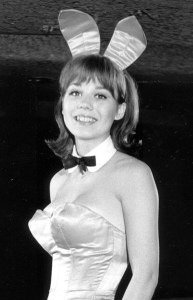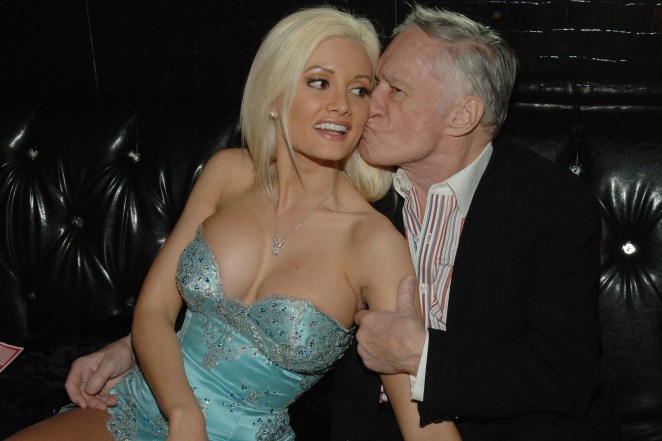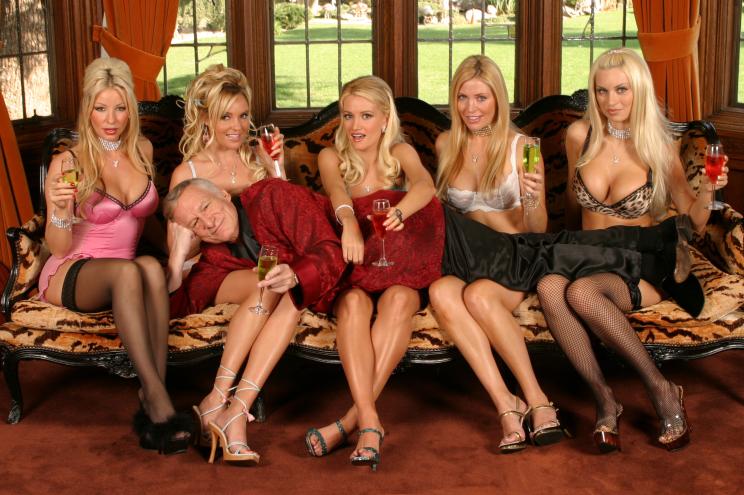Hugh Hefner, who died Wednesday at age 91, was the ultimate lady’s man — so who better to tell his story than some of the women who worked closely with him.
In 1952, a 25-year-old Hefner was living in his hometown of Chicago working as a copywriter at Esquire. He asked for a $5 raise, but was turned down — so he launched Playboy the following year with just $8,000.
The first edition sold out.
Barbara Nellis, editor, Playboy (1970-2003): He asked Esquire for a raise and they said no, and he said, “F–k you, I’m going to start my own magazine.” He got young men because he was one . . . What he did was say young men could be sexual and smart and drink a martini and listen to music and buy crap for their apartments and all of that was good. None of that was bad. And he timed it perfectly — by the time the ’60s were in full swing, everybody who was young thought that was true.
Kathryn Leigh Scott, bunny, New York Playboy Club (1963-1966): If you think about it, Hefner started his magazine when young men were coming home from the Korean War. A lot were the first in their family to go to college. They were entering a more cosmopolitan, sophisticated world, and he therefore started that magazine. It was sort of a primer for young men, giving them advice on what hi-fi equipment to buy, how to take a girl out to dinner, order in a restaurant.
Nellis: He never, ever said, “I’m sorry, you’re a woman, there’s no job here for you.” The cartoon editor was a woman, the copy editor was a woman. Right around the time I got there, there were a couple of woman editors. There was never any of your kind of bias. I’m not saying there was never anything boorish in Playboy, but everybody who worked there could say what they thought.
By the 1960s, Playboy was more than just a magazine — it was a brand. The first Playboy Club opened in Chicago in 1960. Hefner didn’t run the clubs — but he did visit.
Scott: It was really Hef’s brother, Keith, he was in charge of all of [the clubs]. Hefner had nothing to do with it. He was all about the magazine.

Gloria Steinem and I were both hires in 1963 and we were in bunny training together . . . She wrote about me in her exposé [of working at the club]. She had her own viewpoint — which she’s perfectly entitled to, but she was disparaging to the young women, many of whom were still in school and just as ambitious as she was.
Billie Wilson, bunny at the short-lived Atlantic City Playboy Club in 1981: [When Hef came in] it was more like a celebrity had arrived, he was flanked on each arm by beautiful Playmates . . . When you were a bunny, you were a little celebrity in your own right, a lot of us got opportunities from it.
To work for Playboy, they had very strict rules. I liked it because you were constantly protected, people couldn’t touch you. We had security all the time and went through a lot of training — like, you could only serve drinks doing the bunny dip, you couldn’t lean.
I also got weighed in every day, you had to stay a certain weight.
Hefner divorced his first wife in 1959 after she cheated on him. But he stayed in Chicago until 1971, and the Windy City was home to the original Playboy Mansion.
Nellis: By the time I got there, [Hefner] was no longer coming into the office, he was working from home. He had his own life, his own social life, his own fun life. Elton John came and stayed, The Rolling Stones came and stayed, Shel Silverstien lived in the [Chicago] mansion for a while. I was 25 when I got there, and you just didn’t believe this is the way your professional life was.
Hef had moved to LA in the mid-1970s as the Playboy empire reached its peak. But the conservatism of the 1980s hit hard — as did Hef’s minor stroke in 1985 at 59.
June De Young, bunny and fashion designer at Playboy’s Empire Club in New York (1985-1986): He was losing money on the Empire. He didn’t know what to do . . . He let me do fashion shows. He had me design 30 Playboy bunny theme costumes. And out of those, I became the Statue of Liberty.
He had the [stroke], and I was the one that poured him his Pepsi. He didn’t drink . . . We discussed death and what to do. Everybody said he was different after the heart stuff.
Nellis: What [Hefner’s daughter] Christie did when she became CEO in the early ‘80s, she was able to say . . . why do we need to be a book publisher? Why make movies? Why do we need records? . . . She could talk to business people. He was an editor. He stayed in his bedroom and pored over the words and the pictures.
But Hef didn’t give up his party lifestyle — or his streams of girlfriends.
Scott: The parties were wonderful. I think my favorite was always the Midsummer’s Eve parties, the New Year’s, Halloween, Fourth of July. Fabulous food, wonderful buffets. Hef had his own zoo . . . It was very classy, if there was debauchery, it didn’t happen when I was around.
Jennifer Saginor, the daughter of Hef’s live-in doctor, grew up in the Mansion: It was such a blast, so fun, it was hard to really see what are you really caught up in.
It was a constant rotation of girls . . . I grew up thinking it was normal for older men to be with young girls. No one’s ID was checked at the doors, let’s just put it that way.
I think a lot of it was a projected image of how he wanted people to view him. You wouldn’t have to pay girls to be on salaries and allowances if it was something that was truly genuine and authentic. It was a brand.
Singer Aubrey O’Day, a 2009 Playboy covergirl: He controlled the room and the atmosphere. There could be 15 of the most gorgeous, young, hot male models in the room, half-naked and covered in baby oil, and you’d see Hef — and he’s 81 — and say, “He’s so sexy” . . . Until meeting him, I didn’t understand how many young, beautiful women could fall in love and be with him. I’m not saying all of them were there for the right reasons.
Holly Madison, dated Hef (2001-2008). In her 2015 tell-all book, she wrote of her first sexual experience with him, saying: “I have never had a more disconnected experience. There was zero intimacy involved. No kissing, nothing. It was so brief that I can’t even recall what it felt like beyond having a heavy body on top of mine.”

Courtney Culkin, a 2005 Playmate: He was a very softspoken, kind, gentleman. He would always kiss me hello on the cheek. He was quiet at that point, about 80. The Mansion was magical for a girl that was 22 years old. It was like a sorority house. All the girls — it was a sisterhood. Sometimes competitive, but a safe haven, really.
’Til the end, Hefner remained heavily involved in the magazine.
Patty Lamberti, editor at Playboy (2000-2005): I was the Playboy Party Jokes editor — there was a jokes page on the back of the centerfold. As time went on, he was less and less involved with the magazine, but was always deeply concerned with that page. We communicated a lot by fax — he loved faxing. He was a fantastic line editor. He would make the jokes as concise as possible and write “Good job, they were funny this month.” Other months, he would tear me apart and say, “This is the worst I’ve ever read.”
I think that he was involved until the very end. When they redesigned and took out the nudity, he oversaw every page. I think he would’ve liked to keep it nude, and I’m sure he was happy now that it’s gone back to that.
Alison Prato, started as an intern at Playboy in 1996 and stayed for 10 years: He had astounding attention to detail. Towards the end I started editing these party pages — all the happenings at the mansions . . . he would call at home and leave these minutes-long messages on my answering machine. He documented every minute of his life.
I hope [his legacy] will be somebody who fought for equal rights and civil rights and animal rights. He really felt strongly about that stuff. I hope people will look back and see he brought this amazing collection of voices and artists and people together in this publication and wanted to celebrate life. I can’t think of anybody who lived a fuller life.








